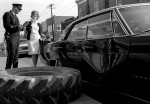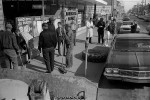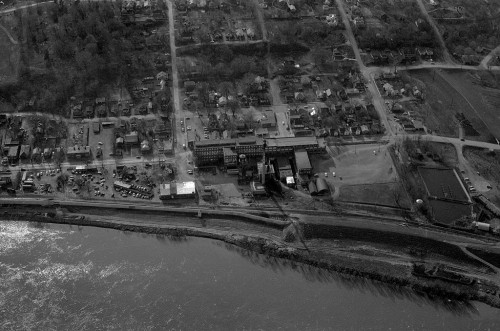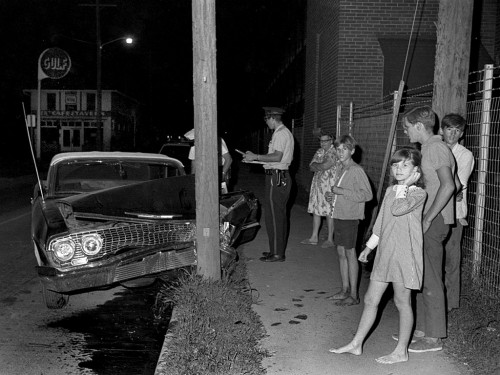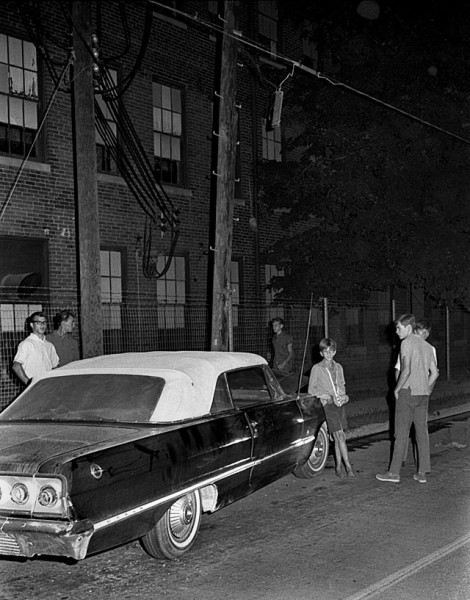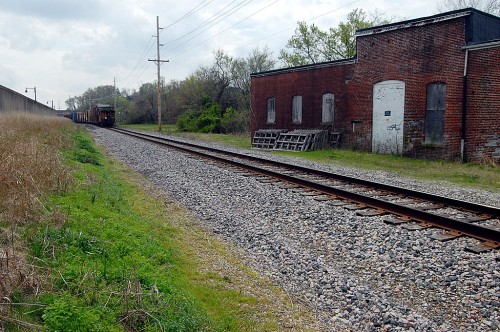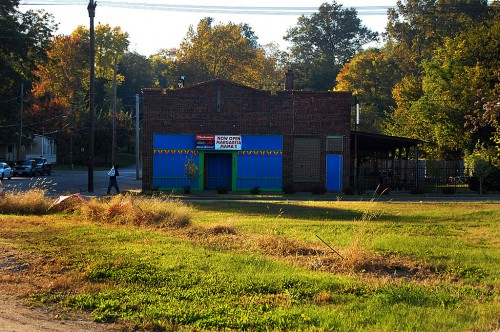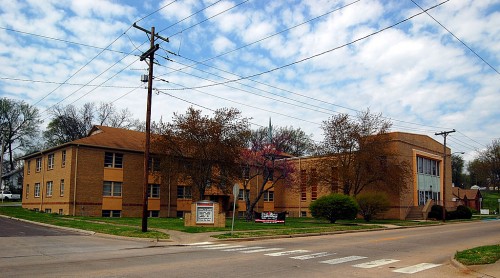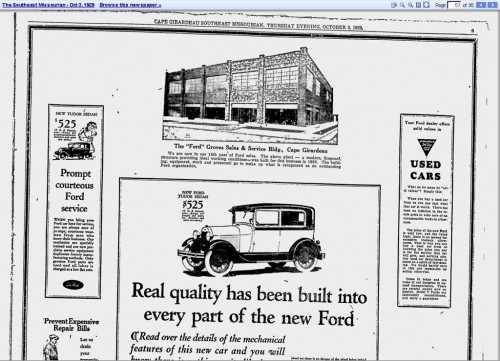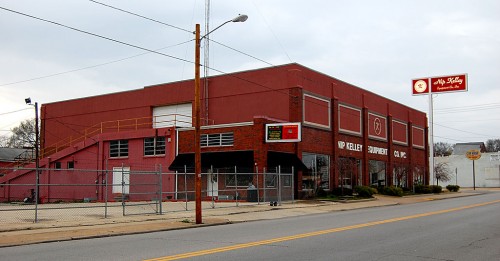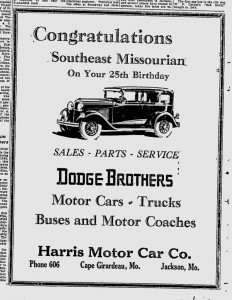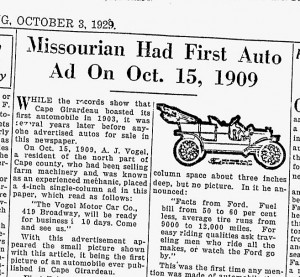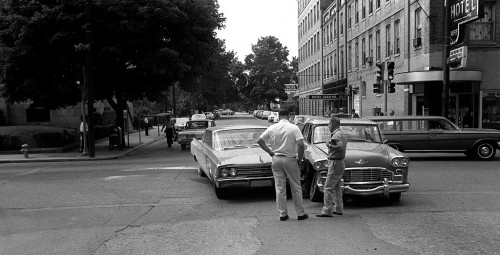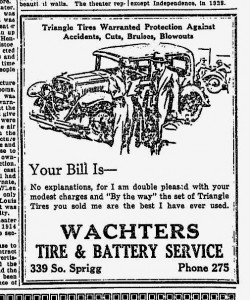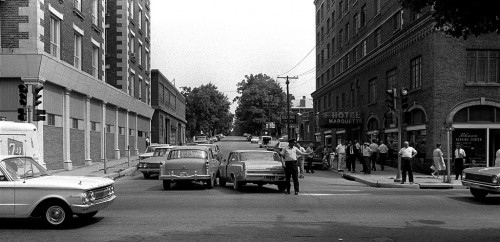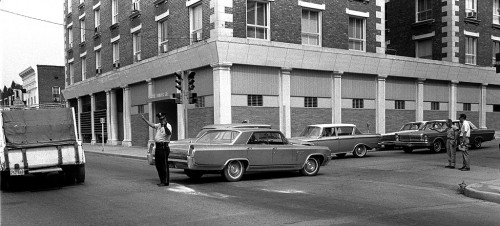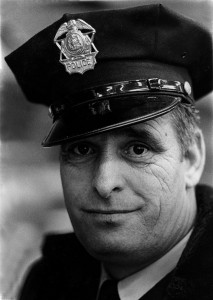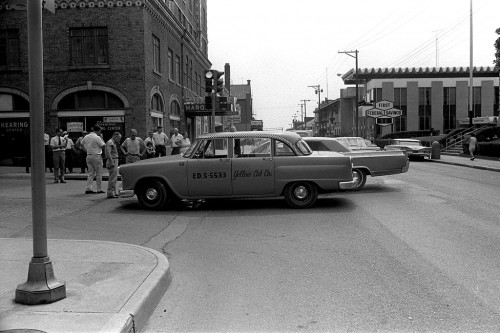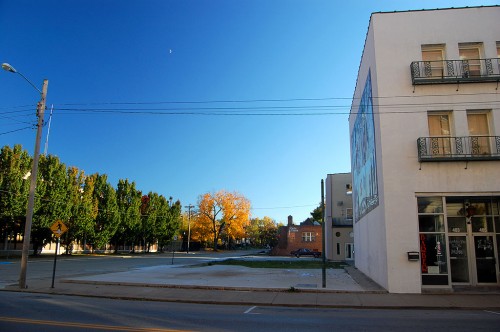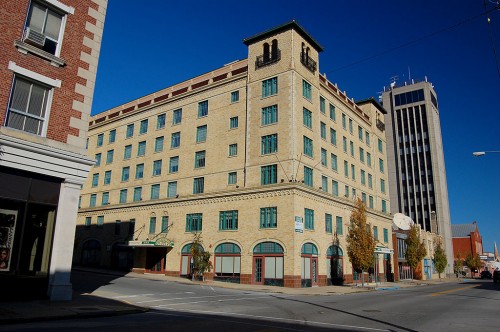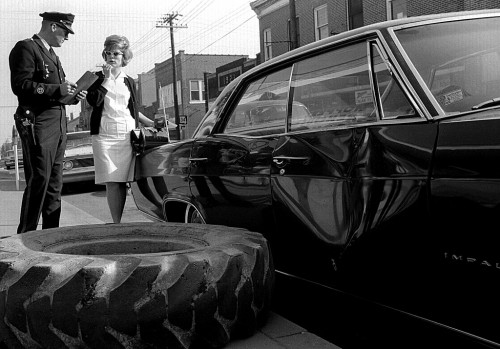 The big news in The Missourian Nov. 20, 1965, was a 700-pound wheel that broke off a city motor grader and went bouncing down the 700 block of Broadway. It smashed a window at Shoppers’ Warehouse Market, Inc., then bounced into in the side of Mrs. Diane Kincaid’s car. No one was injured. Cape Girardeau Patrolman Jeffery L. Steger is investigating.
The big news in The Missourian Nov. 20, 1965, was a 700-pound wheel that broke off a city motor grader and went bouncing down the 700 block of Broadway. It smashed a window at Shoppers’ Warehouse Market, Inc., then bounced into in the side of Mrs. Diane Kincaid’s car. No one was injured. Cape Girardeau Patrolman Jeffery L. Steger is investigating.
That’s the most newsworthy photo – and the one that ran in the paper – but some of the other frames I shot that day are interesting from a historical standpoint.
Pete Koch’s Sinclair Station
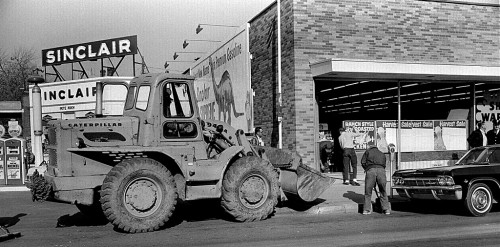 I tried to read the price on the pumps, but I couldn’t make it out. My guess is that it was about 36 cents a gallon in 1965. The building and pumps have been replaced by a convenience store named Downtown Sinclair.
I tried to read the price on the pumps, but I couldn’t make it out. My guess is that it was about 36 cents a gallon in 1965. The building and pumps have been replaced by a convenience store named Downtown Sinclair.
Downtown Sinclair in 2009
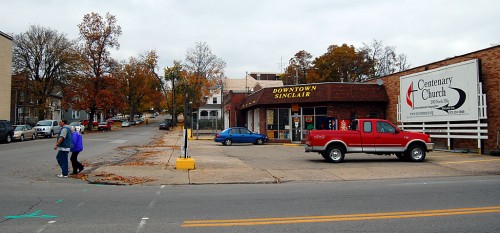 If there are any gas pumps around, I can’t see them in this photo. The Dino the Dinosaur sign has been replaced by one directing you to Centenary Church.
If there are any gas pumps around, I can’t see them in this photo. The Dino the Dinosaur sign has been replaced by one directing you to Centenary Church.
Familiar buildings on Broadway
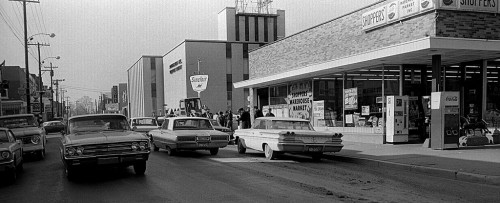 The phone company building still has its microwave tower used for long distance back in the days before fiber optic cable. With a little imagination, I thought I could read that a Steve McQueen movie was playing at the Esquire, but I couldn’t make out the name of which one.
The phone company building still has its microwave tower used for long distance back in the days before fiber optic cable. With a little imagination, I thought I could read that a Steve McQueen movie was playing at the Esquire, but I couldn’t make out the name of which one.
I can make out signs for Bill’s Pharmacy and Wayne’s Grill, the home of the best filet I’ve ever eaten. It was a Saturday payday ritual to stop off and have one of those bacon-wrapped steaks.
Crash attracted crowd
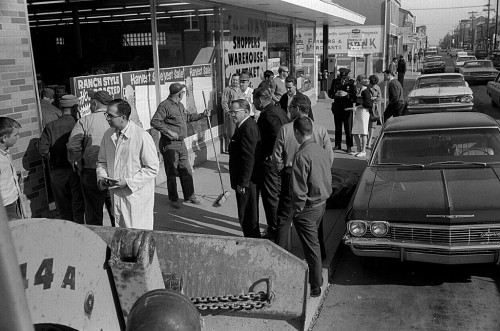 A crowd gathered, with much looking, speculating and theory-thrashing. In one of the photos in the gallery, someone with a movie camera showed up, probably from KFVS-TV.
A crowd gathered, with much looking, speculating and theory-thrashing. In one of the photos in the gallery, someone with a movie camera showed up, probably from KFVS-TV.
Photo Gallery of the Big Tire Crash
Include are all of the shots taken in 1965, plus contemporary photos of the neighborhood in 2009. Click on any image to make it larger, then click on the left or right side to move through the gallery.

